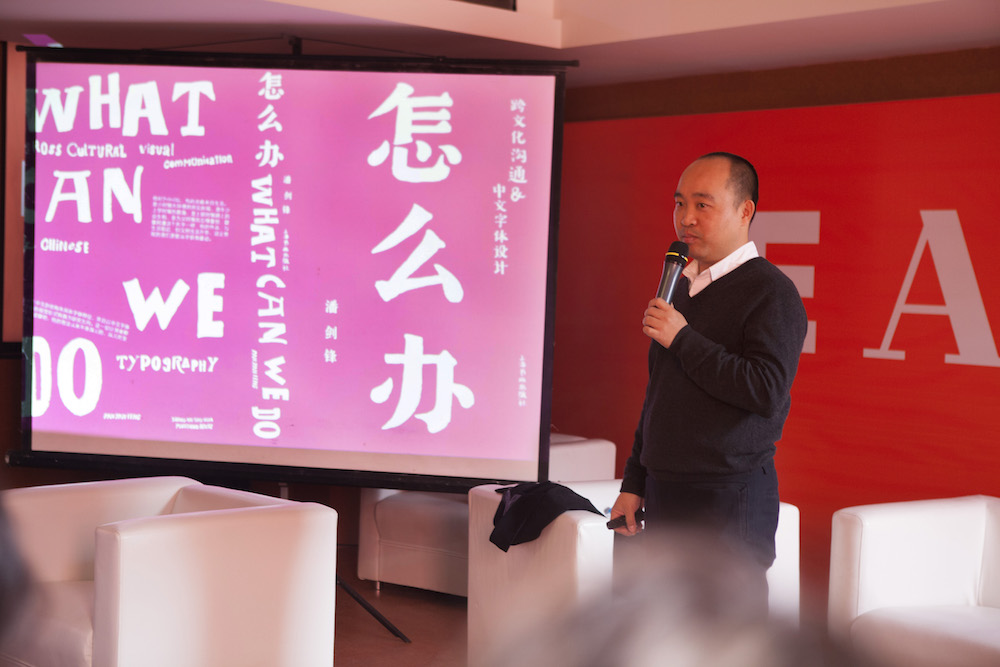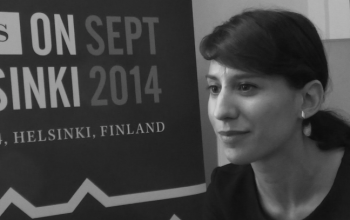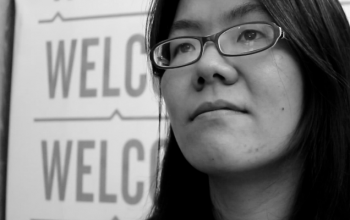SHTYPE is a multidisciplinary design consultancy, specialized in Chinese typography, cross cultural visual communication and design. SHTYPE was founded by Pan Jianfeng in 2005. EARS had a talk with Pan to get insight into his cross-cultural work as well as Chinese typography.
Hey, who are you and what do you do?
My name is Pan Jianfeng and I’m from China. I’m a graphic designer but some people call me an artist.
What kind of projects are you working with at the moment?
We are working with the visual identity for Norway. They want to build a new identity in China. Their previous logo was very serious and formal, and they feel that Chinese people may not be very interested in that. We are now designing a better, friendlier image for them and building a concept where Norway is the gate to the Nordic countries. Another recent project we have been working with is a brochure design for a couple of French companies. These companies have rent a 90 year old building and are turning it to their office. They asked me to design a leaflet, which actually looks kind of like a newspaper, to tell about their business concepts and the history of the building. The whole paper, all the elements in it, will be hand-painted with brush.
What has been the most meaningful project to you so far?
Well this newspaper project is kind of commercial but we are using the brushes to develop a new style, so I like that very much. When talking about independent projects, I would say that all my art projects have been meaningful as they are all about my own observation of the world and my daily life. My art is quite deep in Chinese society, the history and also some contemporary problems that we face.
China has high speed development but many problems.
You have a recent project called True Life, could you tell us what it’s about?
The True Life Project was a part of the Design Shanghai 2013 exhibition. It was a collaboration project by me, a Finnish architect Teemu Kurkela and my other friend Martta Louekari. The three of us had a nice Finnish summer holiday in Helsinki. Previously I had been asked to make something for the Design Shanghai exhibition and we started to think together what could we do for the exhibition. We were living on an island in a beautiful place called Villa Oivala. We were watching this beautiful landscape and wondering what our true life was. This way we came up with this concept, True Life. We see that as designers, we can help Chinese for example to look at their own life from a different angle. China has high speed development but many problems at the same time. That made us ask a question: what is true life, in China or somewhere else? It’s a question mark basically.
I use art to find answers
What was the output of True Life for Design Shanghai?
Together with Teemu, we built a pavilion, a house a bit like a summer cottage. People could lie down there. Then we invited our friends to bring their salute or idea of true life to the pavilion. We had ten different boxes and each of them had 0ne to display their vision of true life. Boxes were innovatively visioned and one box, for example, represented clean air. We received good media exposure and feedback from Chinese audience and this has led to longer projects. I’m going to Helsinki in July 2014 to do a True Life residency. You could say art basically is my tool in life, I use it to find some answers.
How do you see true life is different in China compared to Finland for example?
We come from different cultural backgrounds, so it’s very different. Even in China, in different cities for example in Shanghai or in Guangzhou, people have quite different lives. We have our current life and everybody is always looking to make their lives a bit better. We call this true life and it’s very different for different people.
What is true life to you?
I deal with typography so for me a good typography or good calligraphy is very important. Also porcelain ceramic which carries more meaning, could be a true inspiration or true understanding about life to me.
What does typography mean to you?
First of all, for me typography is very much associated with Chinese calligraphy. If you are a good graphic designer you must have good skills in typography, and in my point of view, if you are a good typographer you must know what’s good calligraphy. It might sound a bit complicated but you must remember that Chinese language started from calligraphy. Before computers, say 100 years ago, all Chinese people had to use a brush to write characters, and to use the brush you must know calligraphy first.
Later, people had pens and pencils and they slowly started to forget calligraphy. But in order to see the beauty in the Chinese characters you have to know what is good calligraphy. So I cannot talk about typography separately, I have to talk about calligraphy – I have to associate my calligraphy design with my typography design. In order to know calligraphy you don’t need to be a master but you have to know the history and techniques, the basic structure of characters. Each character has it own meaning in the Chinese language, they are not like A B C D… Each character is a picture itself. So for me, typography is a basic skill when being a graphic designer but it’s not simply just that. Typography is a modern version or form of calligraphy.
Do Chinese people appreciate traditional calligraphy?
Chinesese people still appreciate old traditional calligraphy very much. A lot of people are complaining about the computer fonts as they are quite limited. They are very functional and easy but they don’t have the beauty and the sensitivity of the brush. So when you compare classic pieces, old calligraphy for example, you can see that they have been created by different tools.
You’ve done a lot of cooperation with the Finns. How did this happen?
It’s by accident, just like my artwork. I never have any plans, I always go with the wind. I think I’m a quite easy-going person. I follow my own feelings. When I meet new people and feel that they are good people, I start to keep in touch with them. Then we might create something together.
With the Finns it started by accident in 2009 when Finland had the Snowball conference in Shanghai. The organizer asked me to give a lecture. After the lecture, I took part in this program by Invitation to Helsinki and spent one month in Suomenlinna. It was pretty cold, minus 27 degrees, but I liked it. Compared to Shanghai, it was extremely peaceful and quiet and I was very much enjoying that. I know a lot of Chinese people who would have felt that it was too quiet, they always need many things around. I feel tired in Shanghai. I have had too many projects here during the last ten to twelve years. I feel good physically and mentally in Finland. I met a lot of people especially during the Shanghai Expo and I have worked with many friends from Finland. We have done great projects and received many awards. Everything is telling me that it’s a good direction. I have also learned a lot from all my Finnish friends.
What are you looking forward in EARS on Helsinki?
EARS being a part of Helsinki Design Week is interesting to me as I have never participated in any design weeks. I’m very curious. I’m going to talk about my new book “What Can We Do” at EARS on Helsinki. The book is not only about my design, projects or design thinking. It’s more about rising questions and daily problems in China. I see that as we are living on the same earth, the problems are the same in other places as well, so in Helsinki I would like to talk about these topics with the audience and others participating.
I have also written many articles about my experiences in Finland and about my interpretations of sauna for example. For me sauna is similar to Chinese meditation. It’s nice to share my knowledge with my friends in Finland. Also meeting new people and discovering new projects is always great.
What inspires you right now?
People.






